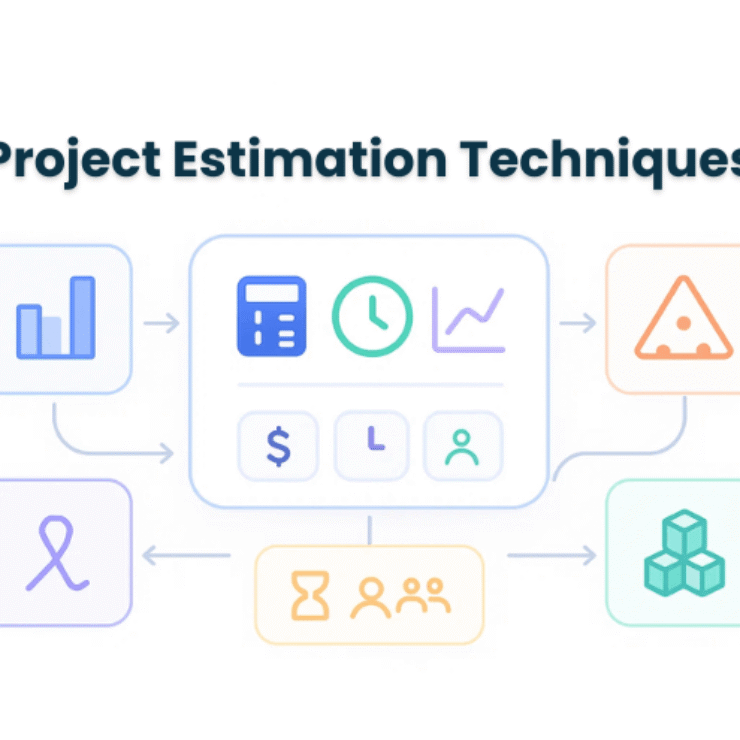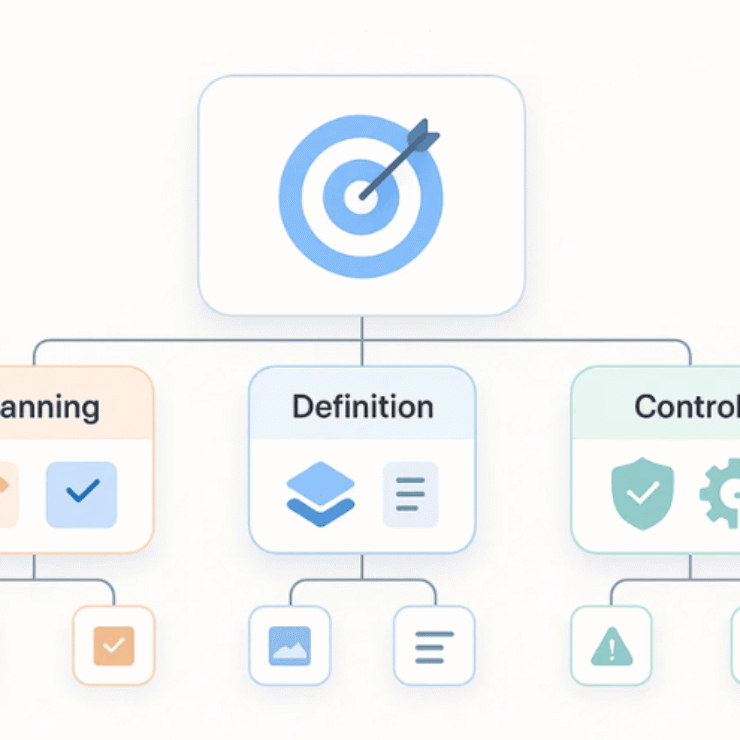Introduction
If you’ve ever managed a project where the team completed task after task… yet somehow still missed the big date, you already understand why milestones matter.
In my 20+ years leading cross-functional projects, I’ve seen this pattern repeat more times than I can count: Teams are busy, tasks look “green,” standups sound good — but the actual project is quietly drifting off track. And the root cause is almost always the same: No clear milestones.
Milestones are the checkpoints that keep your project honest. They help you see progress, catch risks early, and align everyone from the ground team to the boardroom.
McKinsey found that large IT projects run 45% over budget and 7% over time on average — often because teams miss early warning signals that well-defined milestones could have revealed sooner.
In this guide, I’ll take you through what milestones really are, how they work, how to set them, and show you real examples and templates you can apply immediately.
What Are Milestones in Project Management?
Milestones are significant checkpoints in a project that represent major progress or important decisions. They don’t have a duration like tasks — they mark moments.
Think of them as the “You Are Here” markers on your project roadmap. They help everyone instantly understand where the project stands without sifting through long task lists.
Milestones vs Tasks vs Deliverables vs Phase Gates
Before you map milestones, you need to understand what they are not.
Milestones vs Tasks
A task is work. A milestone is a moment.
- Task: “Write the requirements document.”
- Milestone: “Requirements approved.”
Milestones vs Deliverables
A deliverable is a tangible output (document, feature, report). A milestone marks the moment that deliverable is approved or complete.
Milestones vs Phase Gates
Phase gates are checkpoints between project phases (e.g., end of planning → execution). Many important milestones sit right at these gates.
Understanding these differences avoids a common mistake: treating milestones as glorified tasks.
Why Milestones Matter in Project Management
Milestones bring structure, clarity, and calm to a project that otherwise feels chaotic.
1. They give instant progress visibility
Stakeholders don’t want to hear about 47 tasks — they want to know if the phase is done or the release is ready.
According to PMI’s Pulse of the Profession, only 51% of projects are completed on time — one of the key reasons milestone-driven planning has become essential for early schedule visibility.
2. They keep everyone aligned
In one of my earlier enterprise projects, adding just four well-defined milestones helped us catch a dependency issue that would’ve delayed go-live by three weeks. That’s the power of clarity.
3. They expose risks early
A missed milestone is your early-warning system.
4. They boost morale
Milestones give teams something meaningful to celebrate. Small wins → big momentum.
According to a report, only 2.5% of companies successfully deliver 100% of their projects — highlighting why clear milestones are essential for staying on track.
Types of Milestones in Project Management
Milestones come in different forms depending on the project context.
By Impact
- Major milestones: Release ready, UAT complete
- Minor milestones: Prototype version 1 complete
By Ownership
- Internal milestones: Internal draft, engineering review
- External milestones: Client sign-off, compliance approval
By Project Phase
- Initiation (project charter approved)
- Planning (scope baseline finalized)
- Execution (MVP released)
- Closure (handover completed)
Milestones exist wherever a meaningful checkpoint is needed.
How to Set Milestones in Project Management (Step-by-Step)
Here’s a simple, reliable process I’ve used for years.
Step 1: Start with your project goals
Milestones should reflect outcomes, not activities.
Step 2: Build or review your WBS
Break the work down first. You can’t define meaningful milestones if you don’t understand the work.
Step 3: Identify the events that truly matter
Ask: “What event tells us we’ve genuinely progressed?”
This single question has simplified every milestone workshop I’ve ever led.
Step 4: Assign dates and dependencies
Milestones must connect to specific tasks or deliverables. They are not wishful thinking — they are grounded in schedule logic.
Step 5: Validate with stakeholders
Every milestone should serve a purpose: reporting, decision-making, approvals, risk control.
Step 6: Refine & reduce
More milestones ≠ more clarity.
Keep the meaningful ones. Remove the rest.
Milestones Across the Project Life Cycle (With Examples)
Initiation Milestones
- Project charter approved
- Stakeholder matrix finalized
- Budget pre-approved
Planning Milestones
- Scope baseline approved
- Schedule/budget baselined
- Risk management plan finalized
Execution Milestones
- MVP completed
- Integration deployed
- Phase 1 deliverables signed off
Closure Milestones
- UAT approved
- Final handover done
- Project completion sign-off
Milestones exist in every phase — they just look different.
Real-World Examples by Project Type
Software Development Milestones
- Requirements sign-off
- Architecture approved
- Beta release
- Security review passed
- Go-live completed
Marketing Campaign Milestones
- Creative approved
- Content finalized
- Campaign launched
- First performance review
Construction Project Milestones
- Permits acquired
- Foundation completed
- Structural work finished
- Final inspection passed
Consulting / Professional Services Milestones
- Discovery completed
- Interim report delivered
- Recommendations approved
- Implementation kick-off
Milestone Templates You Can Use (Copy & Apply)
1. Simple Milestone List Template
| Milestone | Owner | Planned Date | Actual Date | Status | Notes |
2. Milestone Timeline (Gantt) Template
- Diamond markers for milestones
- Multi-phase timeline
- Color-coded major vs minor milestones
3. Milestone Dashboard Template
Track:
- % milestones on time
- Avg delay (days)
- Milestones at risk
- Major blockers
Templates make milestones actionable — not theoretical.
Tools & Techniques for Tracking Milestones
Tools You Can Use
- Gantt chart tools
- Visual roadmaps
- PM software with milestone flags
Milestone Health Metrics
- % of milestones on time
- Slippage trend
- Milestones delayed more than once
- Milestones blocked by external dependencies
These metrics let you measure milestone effectiveness — not just track them.
Common Mistakes with Milestones (And How to Avoid Them)
1. Confusing tasks with milestones
A milestone represents progress, not work.
2. Creating too many milestones
Over-structuring your project dilutes clarity.
3. Not tying milestones to decisions
A milestone without a decision or outcome has little value.
4. Never updating milestones when scope changes
Milestones must evolve — just like the project plan.
5. Ignoring non-critical but important milestones
Critical path isn’t the whole story.
After reviewing dozens of troubled projects over the years, the most common pattern I’ve seen is teams setting far too many milestones and ending up with a plan that looks impressive… but helps no one.
Best Practices for Using Milestones Effectively
- Make them outcome-focused
- Tie them to approvals or decisions
- Communicate them visually
- Celebrate major milestones
- Limit them to what truly matters
Milestones are meant to guide — not overwhelm.
Final Thoughts
Milestones aren’t just dates on a plan — they’re the anchors that keep your project grounded. Over the years, I’ve seen one truth repeat across IT, marketing, product, and transformation projects: teams that define clear milestones early deliver with confidence, alignment, and predictability.
Good milestones simplify communication, surface risks before they explode, and give teams meaningful moments to celebrate.
If you map your WBS thoroughly, pick only the milestones that truly matter, tie each one to clear outcomes or decisions, and track them consistently — your project will stay controlled, transparent, and far easier to steer.
Milestones don’t make projects rigid. They make them manageable.
FAQs
Milestones are key checkpoints that signify major progress, decisions, or approvals within the project timeline.
They give high-level visibility, improve stakeholder alignment, and reveal risks early.
For most medium-sized projects, 8–20 well-chosen milestones are ideal.
Start with your WBS, identify major events, map them to dates, and link them to dependencies.
Yes — Agile projects map milestones to releases, increments, and major approvals.
Tasks are work. Milestones are progress markers.
Sign-offs, approvals, releases, audit completions, UAT approval, and go-live.



